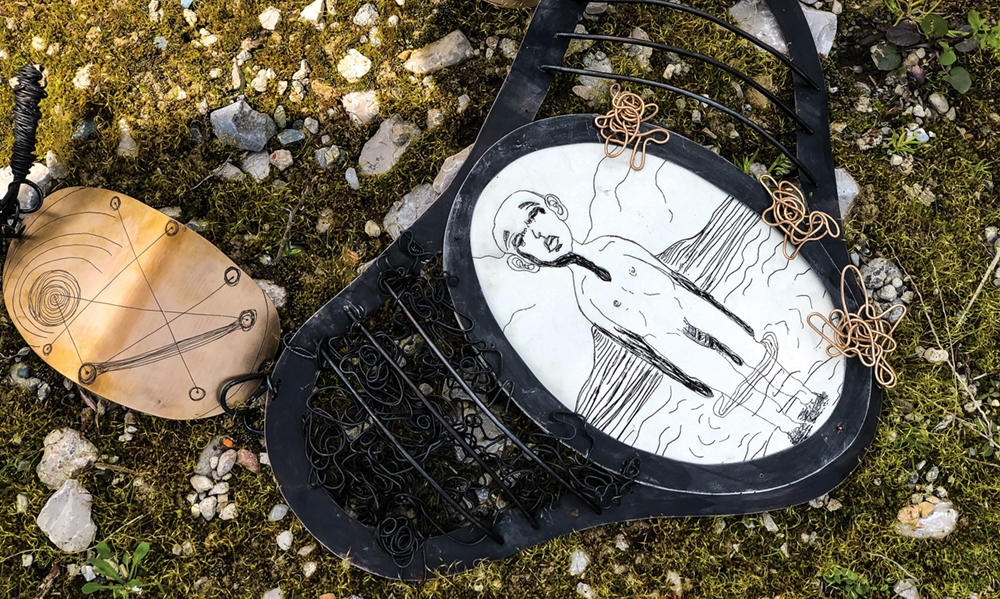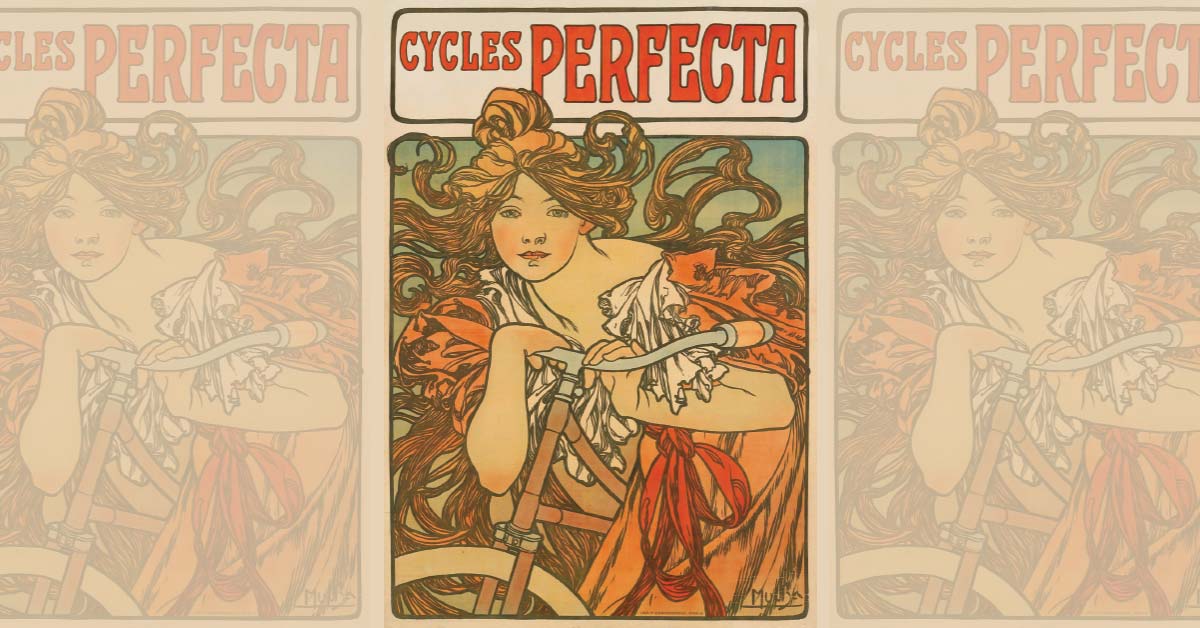For Holly Anne McDermott, a.k.a. HAM, art is a way to process, express and cope all at once. In McDermott’s recent thesis exhibition, Emotional Reflections, printmaking,
etchings, metalsmithing and jewelry all come together to capture the cycles of life and nature. It’s a highly unique and eclectic collection of art that she used to explore emotions in a variety of ways. You can see a piece of it in the Michigan Emerging Graduate Artists show at the Urban Institute for Contemporary Arts, running until Sept. 8. The Grand Valley State University graduate originally came to West Michigan from Detroit and found inspiration in her professors as well as Alexander Calder. We talked with McDermott about the meaning of her art and why she makes it.
Your thesis employed a wide variety of art. How did those all come together?
The process of printmaking felt more emotionally cathartic to me on a personal level as an artist. So, in my thesis work, I was trying to merge it with metalsmithing. I was challenging myself to push that personal and artistic boundary of what I consider metalsmithing, so I drew onto metal and made etchings out of them, and then I printed them on paper in a limited series. And then I took all the plates and I deconstructed them and turned them into a wearable jewelry series.
Going forward, is that what you’re going to focus on, that combination of media?
Yeah, I think so. It just kind of comes naturally to me. A lot of my work is conceptually about duality, in some sense. I think that the printmaking process and then the jewelry making process work to make a duality for metalsmithing. They feel like two sides of the same coin. The printmaking process is a little bit more romantic, if you will. I take that more quiet and reflective process, then I go into the metalsmithing and jewelry making process, which is a little bit more labored and hands-on and technical.
You were originally working with photography and clay. What led you to metal and prints?
I originally transferred to Grand Valley (from community college) looking to go into the ceramics program as my emphasis. But I felt like I couldn’t be creatively expressive in that medium in the way that my soul and my creative energy wanted to express itself. I actually lost my father, so I took a semester off and was very, ‘What the hell am I doing with my life? Am I really studying the thing I want to study?’ Then when I came back, I ended up taking a metalsmithing course. I was also in a poetry writing class and it got me really reflecting on a lot of my journey through art and I noticed that every time I was feeling depressive, I would gravitate toward art as this way to cope. After my father passed and I was in this metals course, it was easy to create and have it feel cathartic.
How did that play into jewelry making?
I was making jewelry works that had a conceptual air to them and all my ideas just came out really fluid. I was really focused on memento mori, which is a tradition in jewelry work that goes back for centuries that’s really about mourning and encapsulating a memory and loving the person that you love who has died. It’s memorializing them through jewelry, something that you can wear every day.
The jewelry you’re making now isn’t typical by any means. Is it intended to be functional?
When I was working on my thesis exhibition, I thought a lot about that. The jewelry making program at Grand Valley was very well-rounded, so I had taken courses that were really concept heavy where you’re making one-off statement pieces that have a conceptual conversation about them. And then I was also well-versed in making just traditional jewelry and those kinds of skills. So, I was trying to find the medium where it’s something that’s wearable and is a statement piece, but could still look good not just on the body. It could look good on a gallery wall, like it was a painting or a work on paper.
What would you like the viewer to come away with when they see your art?
As the process itself was, I think the concepts and the emotions that are being conveyed are also multi-layered. A lot of my artwork, it stems from emotions and our emotional conversations with ourselves and how we cope with things. That turned into me really observing cyclical patterns. I found my own emotions were working in a pattern that was seemingly cyclical. Like, action A produces emotion A, so I cope with this coping mechanism. I was allowing myself to really unearth and delve into my own mental and emotional cycles.
Is there a duality at play here too?
I found that the outside world also went through cycles, like the seasons and the Earth revolving around the sun and all the cosmic cycles. I found them a bit synonymous, in that my cycles were reflections of cycles within the natural world. But we get consumed by our own emotional and mental cycles. I think in the content it comes across maybe a little somber, a little serious.
Who or what else are your artistic influences?
I think in terms of other artists, Dellas Henke has been a really big inspiration for me. He’s a professor at Grand Valley and leads the printmaking department. The way that he draws figures is just really emotive and he conveys a lot of emotions in his prints that I really resonate with. Alexander Calder is another one. He was so crazy. He did so much. He was drawing all the time. He did these crazy sculptures. He was also making jewelry. Another professor of mine in the metals department, Renee Zettle-Sterling, also conveys a lot of mourning emotion through her artwork, which was a big inspiration to me. She showed me this Alexander Calder book and it was just of his jewelry and it blew my mind.
What about going beyond people?
I think something that artistically inspires me is just emotion. I read a lot of poetry, which is very raw and emotional, and I think that my own emotions creatively inspire me. After I’ve gone through something that was triggering or emotional, I always find myself falling back into creating and making, and that brings its own catharsis. I get to process and get all that emotional energy out through creative energy, which fuels the artwork and fuels the content.
Find HAM’s work at hammade.org and on Instagram at worksbyham.
Holly Anne McDermott. Courtesy Photo Middle: Re Aligned Right: Re Created. By Holly Anna McDermott





